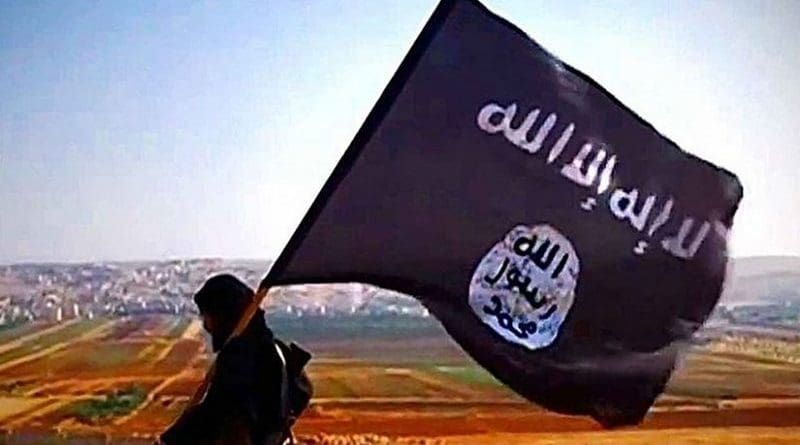Eschatological Beliefs And ISIS – OpEd
There is no single definition of terrorism which might be accepted fully; however, terrorism normally emerges when dis-empowered communities try and combat what they perceive as injustice and oppression on this planet. Emerging as asymmetrical warfare between state and non-state actors, international norms of War are violated by focusing on civilians and exploiting media exposure to create fear.
Throughout history, it has spread in various forms ranging from secular terrorism to religious extremism. In today’s world, the most deadly kind of terrorism was created by using Islamic state narrative prompted underneath the umbrella of eschatological beliefs.
By definition, eschatology is part of theology concerned with the final events of history, or the ultimate destiny of humanity. Followed by all religious theologies including Muslim, Jews, Christians, Hinduism and Zoroastrians, the apparent fall of the last stronghold of the Islamic state was no surprise to terrorism scholars.
After the fall of Aleppo, Raqqa and the Syrian city Dabiq last October; consequently, Islamic State (IS) demolished the 842-year old Al Nuri mosque.
However, apocalyptic beliefs were not widespread throughout the Middle-East before the U.S. led invasion of Iraq in 2003.It was the military invasion that radically transformed the landscape of eschatological ideologies, resulting in widespread apocalyptic thinking.
One such Sunni Salafist caught up in this groundswell of apocalyptic was Abu Musab Al Zarqawi, a bloodthirsty madman; even Osama bin Laden (OBL) didn’t agree with his brutal tactics war agenda of beheading the shiite Muslim. Zarqawi became the leader of Al-Qaeda affiliate in Iraq after he fled from Afghanistan.
Zarqawi followed an apocalyptic extremist ideology while OBL had a less grandiose view about an imminent end to the contemporary world. For example, before the U.S drone strike on Zarqawi in 2006, Zarqawi famously acknowledged that “the spark has been lit here in Iraq and its heat will continue to intensify by Allah’s permission until it burns the crusader’s armies in Dabiq(Syria)”.
Having strategically less significance, Dabiq was a small Syrian town but IS used it for their political interests. Mainly because this city is where the battle called Armageddon will happen according to eschatological beliefs. Most importantly, ISIS is still operating its propaganda magazine named Dabiq.
After Zarqawi died, a man named Abu Ayyub al-Masri having close ties with Al Qaeda took over charge of Middle East operations in Iraq, during his tenure the group was re-branded as the Islamic State of Iraq. In line with Masri’s political aims, his primary apocalyptic focus was the appearance of the Mahdi(messianic figure in Islam) who is referred to in the Prophecies as the leader of the battle of Armageddon in Dabiq.
Even though Masri made a number of strategic decisions based on his eschatological convictions. On the whole, the Islamic state of Iraq has been using this propaganda to maximize the recruitment process in their organization.
As a result, they have gained a cosmic fan following all over the world including the Middle East, Europe, America and Asia. Since Masri’s death in the Iraqi city of Tikrit in 2010, Abu Baker al-Baghdadi took over the charge of this“black banner army”. Syrian civil war, resulted in formation of Al-Qaeda affiliate now known as the Fateh al-Sham group.(Al-Nusra front)
In 2013 Baghdadi shocked the world by announcing that Al Nusra front was now under command and control of ISI (Islamic State of Iraq) right after this merger it became the Islamic State of Iraq and Syria(Levant). Baghdadi announcement was forming a caliphate just like Ottoman Empire, albeit ISIS never recognized the Ottoman Empire as legitimate.
Nevertheless, Baghdadi smartly maintained the eschatological beliefs even after the death of Masri, though the focus had been changed under the leadership of Baghdadi.
With continuous shifts in political stance of ISIS, there is a huge possibility that it will have new targets in the coming future. For example, since it began to lose territory, it sharply changed its strategy from inward state building to outward foreign attacks with the help of lone wolves or small groups.As a result, this technique started a new phenomenon more like transnational terrorism.
Openly calling the younger generation as the cubs of the caliphate, these methods for inculcating radicalization were found to have direct links with the American intervention in Afghanistan and Iraq.
Finally, the self-proclaimed caliphate of ISIS collapsed in both Syria and Iraq. However, this does not mean it will not re-emerge in the future there are a lot of ISIS sleepers cells and supporters across globe.
To conclude, terrorist outfits come and go, but the ultra-modern variation within this museum of eschatological ideologies is an Islamic state. Disseminated with eschatological ideologies, a few of them tried to convey about the apocalypse to exploit it. Therefore, terrorist outfits have reassessed current affairs and spread mis-interpretations of eschatological beliefs to further their own agenda.
*Adeel Abbas Mangi holds a Masters in International Relations from [school of politics and international relations] Quaid Azam University Islamabad and writes on Pakistan foreign policy, terrorism, strategic affairs of West-Asia and with a special focus on the BRI and CPEC

